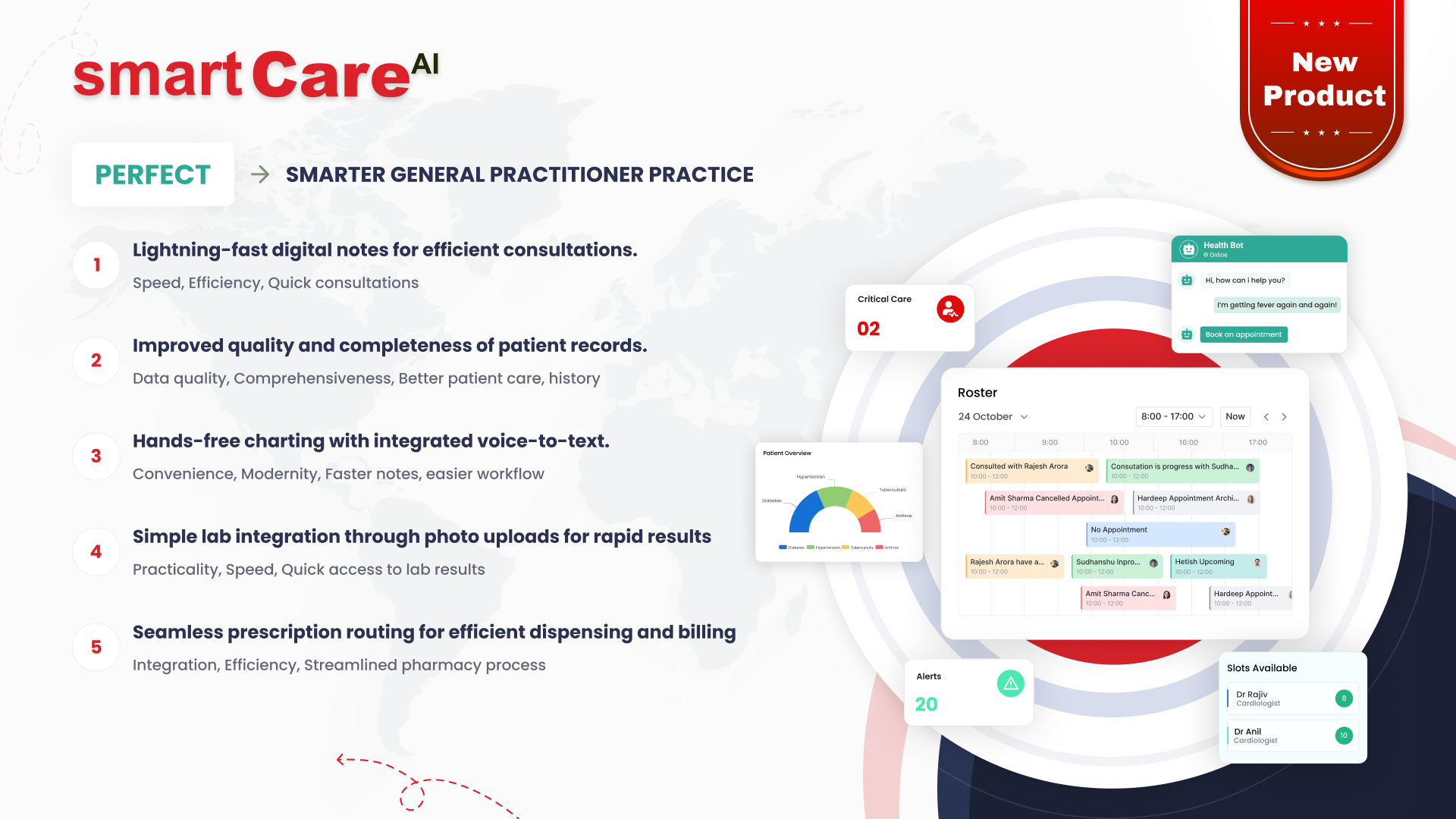
Posted On November 10, 2025
Key Challenges in Healthcare Software Implementation & How to Overcome Them
Implementing healthcare software is never a straightforward task. Hospitals, clinics, and healthcare organisations deal with sensitive data, complex workflows, and strict regulations. While technology can significantly improve efficiency and patient outcomes, successful implementation requires careful planning and a clear understanding of common challenges. Below are five key obstacles and practical ways to overcome them.
Understanding the Complexity of Healthcare Workflows
Healthcare environments operate through multiple interconnected processes. Patient admissions, clinical decision-making, discharge planning, billing, and reporting all rely on precise coordination. When software does not align with these workflows, it disrupts daily operations.
How to overcome it:
Start with a detailed workflow analysis. Engage clinicians, administrators, and support staff early so the system is designed around real practices rather than assumptions. Pilot testing and phased rollouts also help uncover workflow gaps before full deployment.
Ensuring Data Privacy and Security Compliance
Healthcare organisations manage highly sensitive patient information. Any software must follow strict data protection standards, including secure access controls, encryption, and regulatory compliance. A security weakness can lead to data breaches, legal issues, and damage to patient trust.
How to overcome it:
Choose systems that meet national and industry standards for data protection. Conduct regular risk assessments, create clear internal data-handling guidelines, and ensure strong authentication measures. Staff should also receive ongoing training in cybersecurity best practices.
Integrating New Software with Legacy Systems
Many facilities still operate older systems that are not always compatible with modern solutions. Poor integration can lead to fragmented data, duplicated work, and communication delays between departments.
How to overcome it:
Assess existing systems before implementation to identify integration requirements. Use APIs and interoperability tools to bridge gaps. Work closely with the software provider to ensure seamless data exchange and minimal disruption to ongoing operations.
Managing Costs and Budget Constraints Effectively
Budget limitations are a significant barrier for many healthcare organisations. Software projects often involve more than licensing fees, including training, maintenance, upgrades, and potential workflow adjustments.
How to overcome it:
Create a clear budget plan that includes upfront and long-term costs. Compare solutions not just on price but on value, reliability, and scalability. Implement the software in phases if needed to spread costs without compromising quality.
Overcoming Resistance from Clinical Staff
Healthcare professionals may be hesitant to adopt new systems, especially if they feel it will slow them down or add extra steps to their workflow. Resistance can lead to low adoption and underuse of key features.
How to overcome it:
Communicate the benefits clearly and involve staff from the beginning. Provide hands-on training, user-friendly guides, and continuous support. When employees see how the system improves accuracy and reduces repetitive tasks, acceptance naturally increases.
Training Users to Maximise Adoption
One of the biggest barriers to successful software implementation is getting healthcare professionals comfortable with the new system. Many clinicians work under time pressure, making it difficult for them to learn new tools at the pace required.
How to overcome it:
Provide role-based training sessions, short tutorials, and practical demonstrations. Allow users to practise in a safe test environment where mistakes do not affect real patients. Offering ongoing support rather than one-off training helps users feel more confident and improves long-term adoption.
Navigating Regulatory and Legal Requirements
Healthcare software must meet strict regulations around data handling, consent, privacy, and documentation. Misunderstanding these rules can delay implementation or lead to compliance issues later.
How to overcome it:
Start with a clear understanding of regional healthcare regulations such as HIPAA, GDPR, or local data protection laws. Involve legal and compliance teams early in the project. Regular audits and documentation ensure the software stays aligned with legal requirements over time.
Achieving Interoperability Across Departments
Healthcare systems work best when different departments can access and share patient information seamlessly. Poor interoperability leads to duplication, miscommunication, and fragmented care.
How to overcome it:
Choose software that supports common healthcare data standards and APIs. Encourage collaboration between vendors, IT teams, and clinical leaders to ensure systems exchange data accurately. Testing interfaces before going live helps catch issues early.
Selecting the Right Vendor and Technology Partner
Not all healthcare software providers offer the same level of support or expertise. Choosing the wrong partner can lead to delays, hidden costs, and a system that fails to meet organisational needs.
How to overcome it:
Evaluate vendors based on experience, support availability, understanding of healthcare workflows, and long-term reliability. Request live demonstrations, case studies, and client references. A strong technology partner acts as an extension of the internal team and ensures smoother implementation.
Planning for Scalability and Long-Term Maintenance
Healthcare needs evolve, and software must adapt to growing patient volumes, new medical services, and updated regulations. Systems that cannot scale lead to performance issues or the need for frequent replacements.
How to overcome it:
Choose flexible and scalable solutions that can handle future growth. Plan for regular updates, security patches, and feature enhancements. Involve IT teams in creating a long-term maintenance roadmap to ensure the software remains stable and relevant.
Conclusion
Healthcare software can transform patient care and operational efficiency, but only when implemented with a clear understanding of common challenges. By analysing workflows, focusing on security, ensuring smooth integration, planning budgets effectively, and engaging staff throughout the process, organisations can achieve a successful transition.
To explore reliable healthcare software development and implementation support, visit https://smartdatainc.com/.
